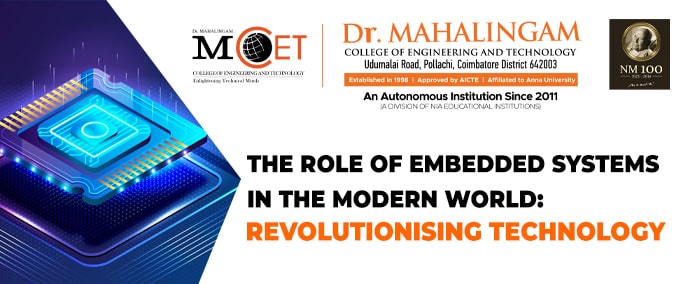Embedded systems have revolutionized the way we live in the modern world. These systems are invisible heroes who play a notable role in the technology that evolves us. From smart home devices to wearable technology, medical devices, automobiles, and industrial automation, embedded systems have changed the way we interact with the world around us. In this curated overview, we’ll explore the importance of embedded systems in modern technology, their advantages, future advancements, and challenges.
Embedded systems are only sometimes visible to the average consumer, but they play a vital role in many uses that we use every day.
Examples of embedded systems:
Smart Home Devices
You’ve probably heard of smart home devices like Amazon Echo, Google Home, and Apple Home Pod. These devices are controlled through voice commands and use embedded systems to interact with other devices in your home. Smart thermostats, security cameras, and lighting systems also rely on embedded systems to function.
Wearable Technology
Wearable technology such as fitness trackers, smart watches, and augmented reality glasses use embedded systems to track your movements and provide real-time information. These devices rely on embedded systems to process data quickly and accurately.
Medical Devices
Medical devices such as insulin pumps, pacemakers, and defibrillators use embedded systems to monitor vital signs and administer medication. These devices require real-time processing to respond quickly and accurately to changing patient conditions.
Automobiles
Modern automobiles rely heavily on embedded systems to operate. Most aspects of vehicle operation rely on embedded systems, from engine management systems to entertainment systems, climate control, and safety features such as airbags and anti-lock brakes.
Industrial Automation
Embedded systems are used in industrial automation to control and monitor manufacturing processes. These systems allow for increased efficiency, accuracy, and safety in manufacturing.
Advantages of Embedded Systems
![]() Real-time processing- Necessary to medical devices and industrial automation applications, where delays of just a few milliseconds can have significant consequences.
Real-time processing- Necessary to medical devices and industrial automation applications, where delays of just a few milliseconds can have significant consequences.
![]() Cost-effectiveness- Designed for a specific application, requires fewer components, and can be manufactured in large quantities.
Cost-effectiveness- Designed for a specific application, requires fewer components, and can be manufactured in large quantities.
![]() Efficiency- Uses less power than traditional computer systems and can operate at lower temperatures, which increases their longevity.
Efficiency- Uses less power than traditional computer systems and can operate at lower temperatures, which increases their longevity.
![]() Energy Conservation- Operated at low power levels and can be programmed to minimize energy consumption during inactivity.
Energy Conservation- Operated at low power levels and can be programmed to minimize energy consumption during inactivity.
Future of Embedded Systems
The future of ES might look brighter, with new opportunities for innovation and growth.
![]() Autonomous vehicles rely heavily on embedded systems to operate safely and efficiently. As technology advances, we expect to see more robust and sophisticated embedded systems in autonomous vehicles.
Autonomous vehicles rely heavily on embedded systems to operate safely and efficiently. As technology advances, we expect to see more robust and sophisticated embedded systems in autonomous vehicles.
![]() Smart cities rely on embedded systems to monitor and control systems like traffic, lighting, and waste management. As cities become more connected and data-driven, embedded systems will play an increasingly important role in their management.
Smart cities rely on embedded systems to monitor and control systems like traffic, lighting, and waste management. As cities become more connected and data-driven, embedded systems will play an increasingly important role in their management.
![]() Advancements in artificial intelligence (AI) are expected to have a significant impact on embedded systems. AI can improve the performance of embedded systems by providing real-time analysis and decision-making capabilities.
Advancements in artificial intelligence (AI) are expected to have a significant impact on embedded systems. AI can improve the performance of embedded systems by providing real-time analysis and decision-making capabilities.
Masters in Embedded Systems at MCET
Embedded systems are the invisible heroes of modern technology. However, there are also several challenges, including integration and interoperability, security and privacy, and limited processing power and memory. Masters in Embedded Systems at MCET, students will overcome these challenges and will be able to use embedded systems more widely. Knowing more about advanced technologies, addressing these challenges, and ensuring that embedded systems continue revolutionizing our lives is essential.



